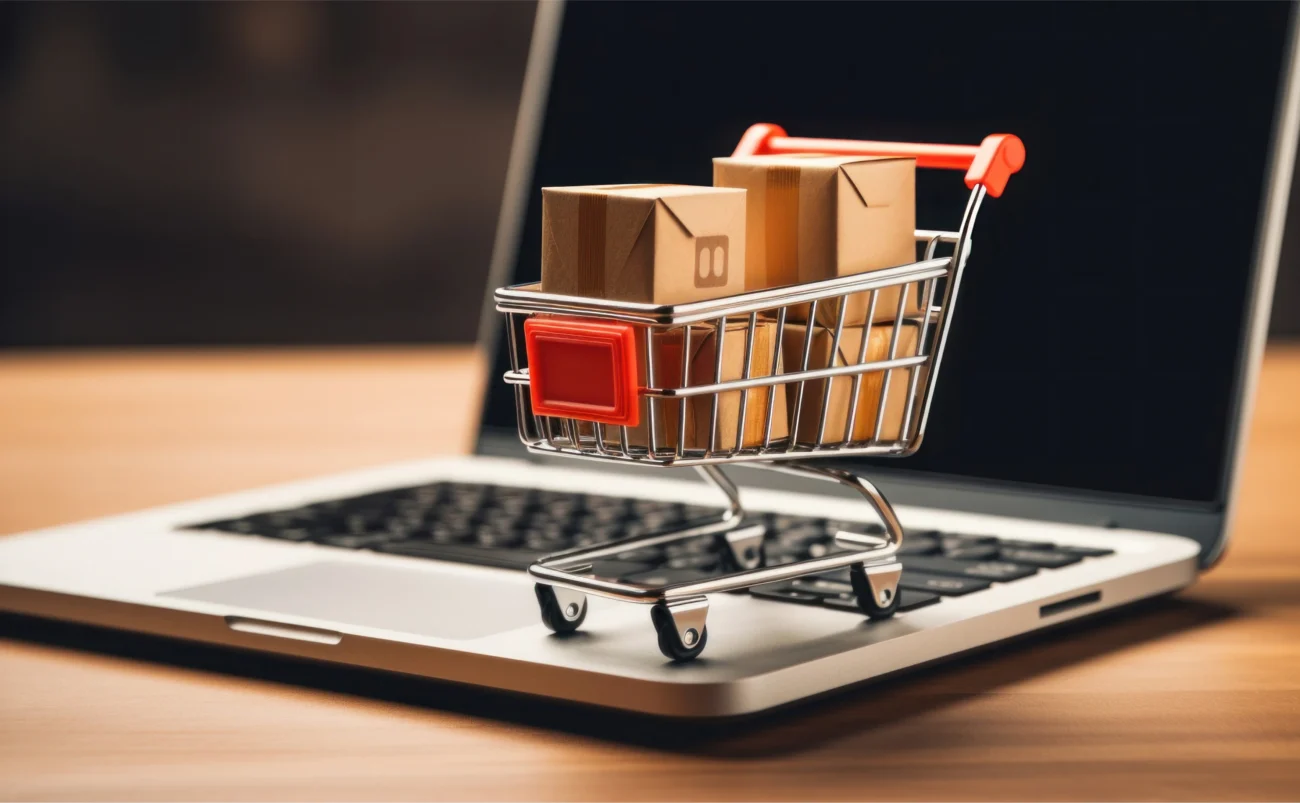In the last two decades, the way people shop has changed forever. Gone are the days when consumers relied solely on physical stores to make purchases. Today, E-commerce — the buying and selling of goods and services online — dominates global retail markets. What started as a convenience has now become a necessity for both businesses and consumers.
What Is E-Commerce?
E-commerce, short for electronic commerce, refers to the process of conducting commercial transactions over the internet. It involves the exchange of products, services, and money through online platforms.
From small businesses selling handmade crafts to global corporations like Amazon and Alibaba, E-commerce has become a cornerstone of modern business operations.
There are several types of E-commerce models:
- B2C (Business to Consumer): Companies sell directly to consumers, like Amazon or eBay.
- B2B (Business to Business): Businesses sell products or services to other businesses, such as wholesalers or SaaS providers.
- C2C (Consumer to Consumer): Individuals sell directly to other individuals, often through platforms like eBay or Facebook Marketplace.
- C2B (Consumer to Business): Individuals offer services or products to companies — such as freelance designers or influencers.
Each of these models plays a vital role in shaping today’s digital economy.
The Rise of E-Commerce
The roots of E-commerce date back to the early 1990s when the internet became widely available. Websites like Amazon (founded in 1994) and eBay (founded in 1995) revolutionized shopping by allowing users to purchase items without leaving their homes.
However, the real explosion happened in the 2010s with the rise of smartphones, social media, and digital payment systems. Mobile shopping apps made online purchases faster and more convenient. Platforms like Shopify, WooCommerce, and Etsy allowed small businesses to compete globally.
The COVID-19 pandemic further accelerated this trend, forcing millions of people to shop online due to lockdowns. In 2020 alone, global E-commerce sales surpassed $4.2 trillion, and the number continues to grow annually.
Why E-Commerce Dominates Today’s Market
E-commerce is not just popular — it’s transformative. Businesses and customers alike enjoy numerous benefits that traditional retail simply cannot match.
A. Convenience and Accessibility
E-commerce allows customers to shop anytime, anywhere. Whether it’s midnight or during a busy workday, products are always accessible with just a few clicks.
B. Cost-Effectiveness
For businesses, running an online store is far cheaper than maintaining a physical one. There are no rental fees, less staffing, and fewer operational costs.
C. Wider Reach
E-commerce eliminates geographical barriers. A small business in one country can sell to customers across the globe without needing physical stores in multiple locations.
D. Data-Driven Insights
Online shopping platforms track user behavior, allowing companies to personalize marketing strategies, recommend products, and predict trends.
E. Customer Reviews and Transparency
E-commerce builds trust through customer reviews and ratings, helping shoppers make informed decisions before buying.
Key Technologies Driving E-Commerce
Technology lies at the heart of every successful online business. Several innovations are shaping how consumers interact with digital stores today.
A. Artificial Intelligence (AI) and Machine Learning
AI powers personalized recommendations, chatbots, and predictive analytics. It helps businesses understand customer preferences and automate responses.
B. Augmented Reality (AR)
AR enables customers to “try before they buy.” Furniture retailers, for example, let users visualize how a sofa will look in their living room before making a purchase.
C. Mobile Commerce (M-Commerce)
Over 70% of online purchases are now made through smartphones. Responsive design, mobile apps, and fast payment gateways are crucial for success.
D. Voice Commerce
Smart assistants like Alexa and Google Assistant are changing shopping habits. Customers can now place orders using voice commands.
E. Secure Payment Gateways
Digital wallets like PayPal, Apple Pay, and Google Pay ensure safe and seamless transactions, enhancing customer confidence.
E-Commerce Marketing Strategies That Work
Running an online store isn’t enough — you need effective marketing to stand out. Here are some proven strategies used by successful E-commerce brands:
A. Search Engine Optimization (SEO)
Optimizing product pages for search engines helps increase visibility. Use keywords in titles, descriptions, and blog content to attract organic traffic.
B. Social Media Marketing
Platforms like Instagram, TikTok, and Facebook drive massive engagement. Influencer collaborations and targeted ads can significantly boost brand awareness.
C. Email Marketing
Sending personalized newsletters, offers, and product updates keeps customers engaged and encourages repeat purchases.
D. Content Marketing
High-quality blogs, videos, and tutorials educate consumers and build trust — positioning your brand as an authority in your niche.
E. Pay-Per-Click Advertising (PPC)
Paid ads on Google or Meta can drive immediate traffic and conversions when optimized correctly.
Challenges in the E-Commerce Industry
Despite its growth, E-commerce faces several challenges that businesses must address to remain competitive.
A. Intense Competition
With millions of online stores, standing out is harder than ever. Unique branding and customer experience are key to success.
B. Logistics and Delivery Issues
Timely delivery and handling returns are critical to customer satisfaction. Many startups struggle with shipping efficiency and costs.
C. Cybersecurity Threats
Online businesses are frequent targets of data breaches and fraud. Ensuring secure payment systems and customer data protection is essential.
D. Customer Trust
Because consumers cannot physically inspect products, they rely on accurate descriptions and images. Misleading information can harm a brand’s reputation.
E. Rising Ad Costs
As more businesses compete for visibility, digital advertising costs on platforms like Google and Facebook continue to rise.
The Future of E-Commerce: What to Expect
The next decade will bring even more exciting transformations in the E-commerce world.
A. AI-Driven Personalization
AI will continue to make shopping experiences smarter and more personal. Websites will dynamically adjust based on each visitor’s preferences.
B. Social Commerce
Platforms like Instagram and TikTok are turning into full-fledged shopping destinations, allowing users to purchase directly through posts or videos.
C. Drone and Autonomous Deliveries
Major logistics companies are testing drones and autonomous vehicles to make deliveries faster and more efficient.
D. Sustainable E-Commerce
Eco-friendly packaging, carbon-neutral shipping, and ethical sourcing will become standard as consumers demand sustainable practices.
E. Virtual Reality Shopping
VR-powered stores will allow customers to explore immersive, lifelike shopping environments from the comfort of their homes.
Tips for Starting Your Own E-Commerce Business
If you’re planning to launch an online store, follow these steps to set yourself up for success:
- Choose a Profitable Niche: Pick a category with steady demand and manageable competition.
- Research Your Market: Understand your audience’s needs, preferences, and purchasing habits.
- Create a Website or Storefront: Use platforms like Shopify, WooCommerce, or Wix to set up your shop.
- Build a Strong Brand: Design a memorable logo, color palette, and consistent brand message.
- Focus on Quality Products: Reliable suppliers and top-quality goods build customer loyalty.
- Market Effectively: Combine SEO, social media, and content marketing for maximum reach.
- Provide Excellent Customer Service: Quick responses and easy return policies encourage repeat customers.
- Monitor Analytics: Track sales, visitor behavior, and conversion rates to make data-driven improvements.
The Global Impact of E-Commerce
E-commerce has revolutionized not just how people shop but also how economies operate. Small businesses can now access global audiences, breaking barriers that once limited growth.
Developing countries are also seeing new opportunities as digital payment systems empower local entrepreneurs. The rise of cross-border trade has made global markets more connected than ever.
E-commerce contributes significantly to GDP in many nations, creates millions of jobs, and drives innovation across logistics, marketing, and technology sectors.
Conclusion: The Digital Shopping Revolution
E-commerce is more than just an online shopping method — it’s a digital revolution reshaping the global economy. It empowers consumers with choice, flexibility, and convenience, while giving entrepreneurs endless opportunities to innovate.
As technology advances, the boundaries between the physical and digital world will blur even further. Whether you’re a shopper or a business owner, one thing is certain: the future of commerce is online.
So if you’ve been thinking about starting an online business, there’s never been a better time than now. The tools, platforms, and opportunities are at your fingertips — all you need is the vision and the drive to make it happen.

